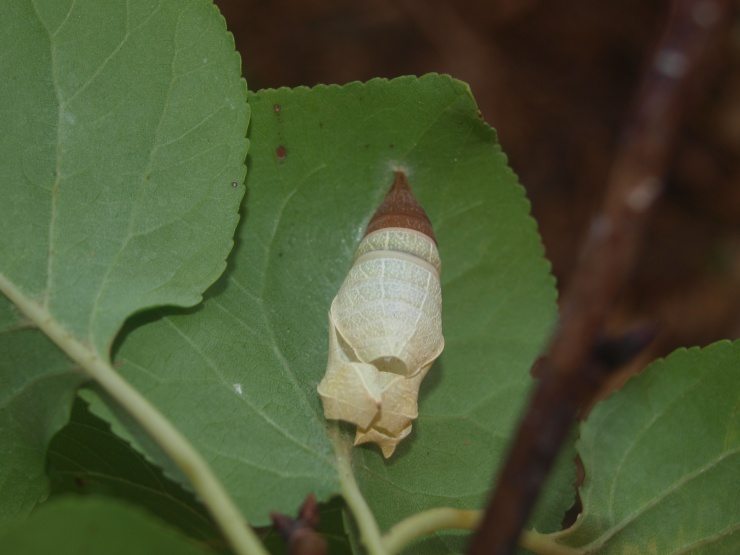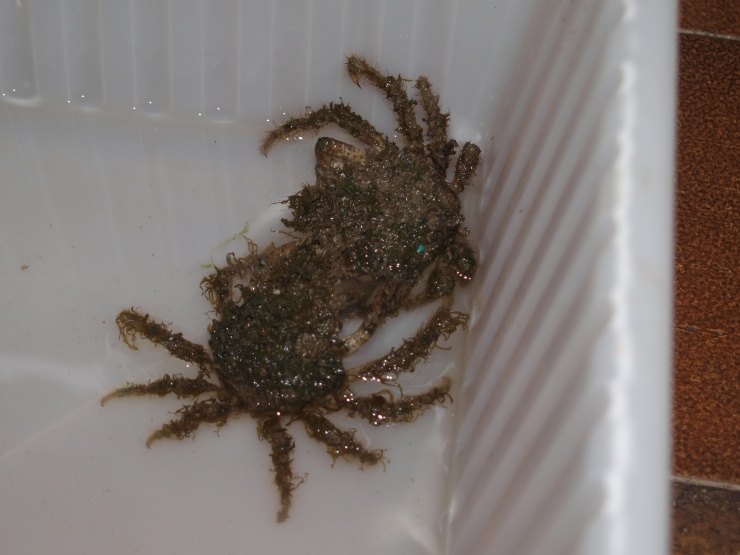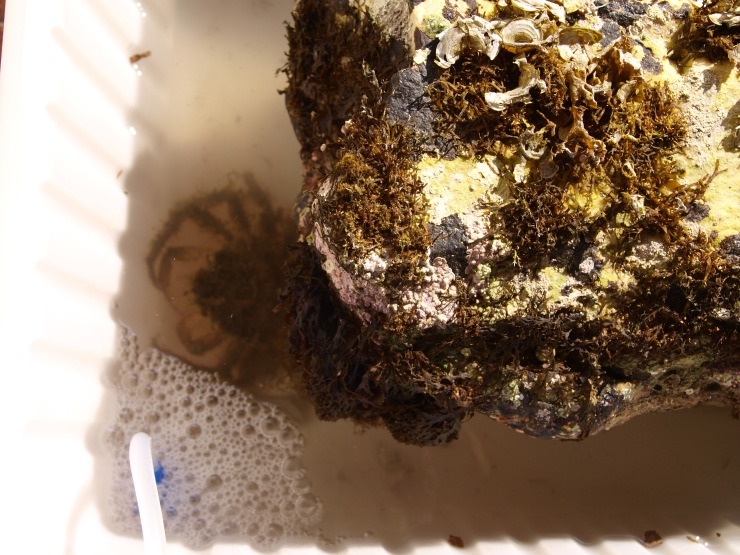
1.Bee’s sting in decomposing form, serving the role of space occupancy against other creatures that starve for food in the same tree.

2. Decomposing nature in seeds mainly accumulation that provides faster moisture in composting schemes

3. Sea anemone animal eating fish, it is a carnivorous species. The yellow colours are sulphur made from biogenic production, the purple include phosphates and other chemistry in mixture essential to plant growth at sea. Obviously the sea anemone question is whether it eats also phytoplankton and the answer is yes and in that occasion a species is called pamphago.

4. Symbiotic relationship of crabs with algae growing on their heads, and of course algae is food for crabs that can pick them up with their tentacles

5. The magnificent adaptation of a crab in an aquarium has to be with an aerator because it needs even more oxygen than the fish

6. Attempt to array an aquarium with snails, sea anemones and crabs and of course photosynthetic algae that are hard to made in this size of aquarium they need more space more water more freedom from the fish in order to survive. The brightest spot in the picture in silver colour could be small part of radioactive substance being naturally occurring as this is true in many parts of the world.

7. An attempt to prepare an aquarium to the grab and fish with shrimp food. In this picture it is seen a rock with brown and green seaweeds and purple phosphates flashing vividly. A perfect environment to grow algae. The yellow rock is again biogenic production from snails, slugs or other similar nature.

8. Ants lay their eggs on the loquat leaves which are in basic substances such as nitrogen so as to nurish the baby. Is not a fear to cultivate without pesticides to destroy this beauty of symbiotic nature because the leaf can wait this obstruction but on the same time the left hand side bunch is intact. So it is a no worry situation and a perfect example of organic and symbiotic relationship between different kind of species. The animal ant provides carbon dioxide to the tree which is essential to plant growth and the tree provides nitrogen and basic other protecting elements to the eggs.

9. Ants in eggs hatching process, the black dots on the picture are ants more mature whereas the yellowish dots are immature ants.

10. Even more immature ants egg processing which are the yellowish dots

11. Palm tree seeds are sweet to eat even though small in portion. It is helpful against smoke and also against diabetes. Obvious reasons to diabetes because it so small portion of sugar that is suggested to every one even to those that doctors advise them not to eat sweets if they are any. On the cons of the palm tree is that they cause deforestation for the palm oil production and this is why palm oil is banned in Iceland. According to this source 25 orangutans die each day because the palm trees take place of their forest.

12. Right on the border of sea and land. How many years of evolution in different sorts of environments and it is hard for the man who is a fisherman or wants to be. With an upwelling method which is to remove bags of water from the sea to irrigate near by plants then the nutrients coming as a replacement from the deep bottom sea help the process of coral formation.

13. Coral formation process, the black points are the genetic material of snails laid on the rocks, the goldish are snails flashing with their colour on the camera, the brown on the right hand side are of course many but the prevailing are algae brown and mussels. The white is the most interesting which is calcium formation (due to upwelling benefit), animals are building the coral as much as they can.

14. Eggs hatching process with many eggs nutritioned by all the crowd of them, it doesn’t work like the mammals that each family feeds the new birth with the breast milk of the mother. A lot more ants participate and a lot more ants are rejuvenate the population.